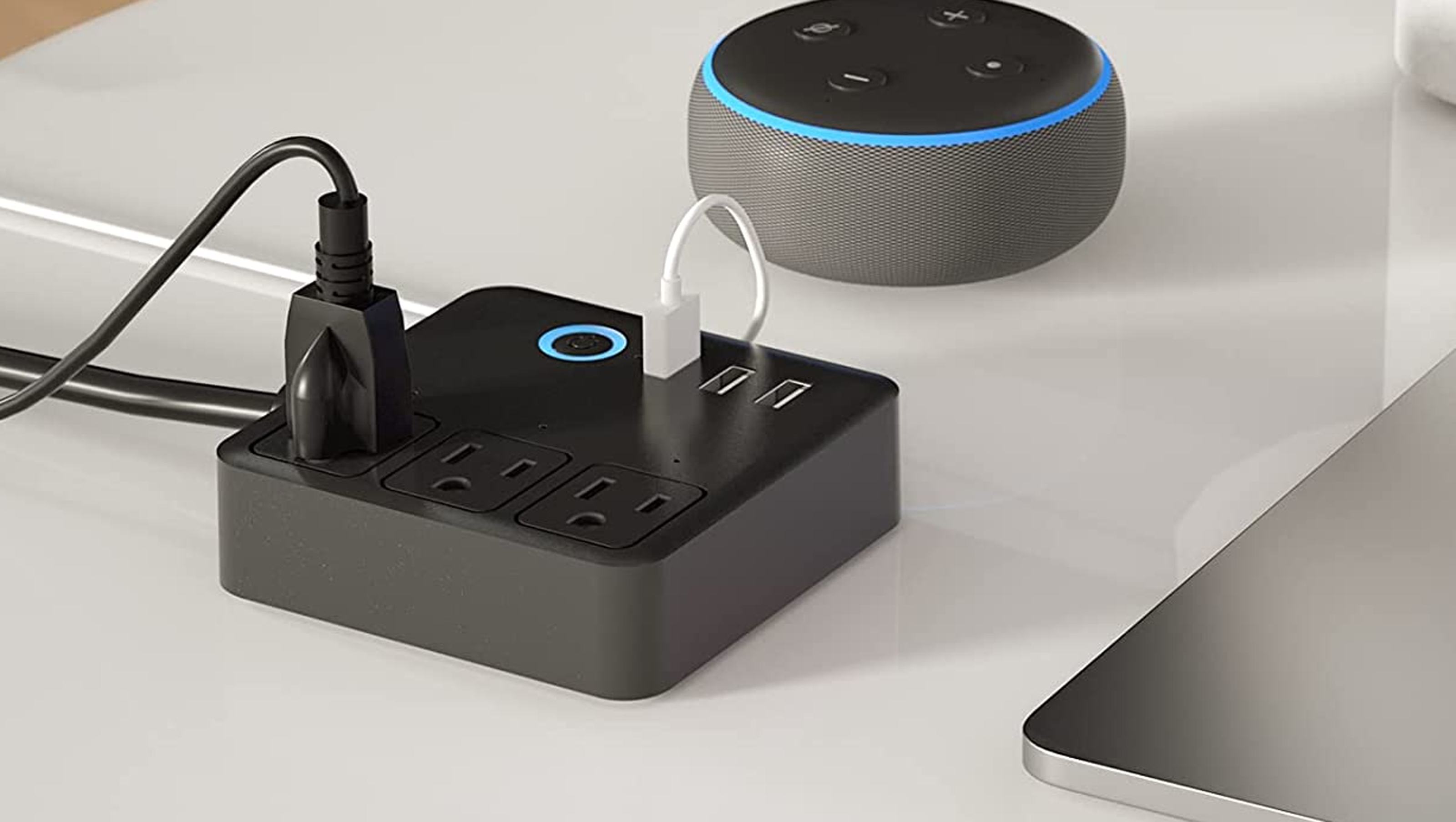Are smart power strips worth it? Our expert on when to choose an extension cord over a smart plug
Smart power strips share all the benefits of smart plugs and then some


Are smart power strips worth it? If you have a lot of old ‘dumb’ devices that you’d like to make smart, or simply want to save some money on your energy bills, then the answer is probably yes.
Like smart plugs, smart power strips let you turn on and off the power to devices remotely via an app, or set to a schedule of your choosing. As these great smart plug ideas show, this can automate various things around the house and even save you money. We’ll dig deeper into that in a moment, but first, what are smart power strips?
What are smart power strips?
We’re all familiar with smart devices that can be controlled via an app. Smart power strips offer basic smart functionality to device, no matter how old, by controlling the flow of power between the device and outlet. It's to power strips what the best smart plugs are to normal plugs - an internet-enabled device that you can plug multiple devices in to.
Got an old, heated blanket that you want to warm up before getting into bed? If it’s connected to a smart socket, you could turn it on from the living room — or even schedule it to turn on at 9:50pm, ready for a toasty arrival at 10pm.
Why would I use a smart power strip instead of a smart plug?
While smart plugs offer just one outlet, smart power strips tend to offer three or more. Some, such as Kasa’s Wi-Fi Power Strip, available from Amazon, include USB ports for charging phones and can be connected to Amazon’s Alexa smart assistant, letting you turn on and off devices with your voice.
Whether you need a smart power strip or a set of smart plugs depends on how much you want to power and your home layout, but most people will probably opt for a combination of the two. Note that it pays to stick to one provider, just to make sure you don’t have to juggle different brands’ apps.
Smart power strips are best in two main use cases. First, for outlets powering multiple connected devices: the various components of your home theater setup, or your desktop PC, screen and speakers, say. While you could just connect a bunch of smart plugs, it’s just easier to have all your devices that work together connected to the same power outlet.
The Livingetc newsletters are your inside source for what’s shaping interiors now - and what’s next. Discover trend forecasts, smart style ideas, and curated shopping inspiration that brings design to life. Subscribe today and stay ahead of the curve.
The second advantage is that they can make hard-to-reach outlets usable again, thanks to their extension cord. If you have a plug socket you can’t use behind a bookshelf, say, this will now make it accessible.
How smart power strips can elevate your smart home and save you money
Because they can make any ‘dumb’ device smart, you’re only really limited by your imagination. Perhaps you want to preheat your air fryer without needing to get up from your desk? Or maybe you want to be able to turn on various old lamps with the power of your voice? If something can spring to life just by being plugged in, it can become part of your smart home with smart power strips.
On top of that, smart plugs do save on electricity in the long run, so smart power strips can actually save you money. Not only can you remotely turn off devices that you forgot to shut down when leaving the house, but you can set schedules for the plugs to work preventing vampire drain — something that the NRDC believes accounts for around 20% of the average house’s electricity usage. You could schedule your smart power strips to turn off all of your devices at night, when you’re on holiday or during office hours.
Yes, this is something you could do manually at the socket, but most people don’t. And for them, the savings will quickly add up without having to lift a finger after the initial setup.
Are smart power strips worth it?
Like smart plugs, smart power strips are well worth having if you want to take your smart home to the next level, reduce your electricity usage, or both. Yes, there’s an initial outlay, but the energy saved will likely pay for itself before too long, if you use them wisely.

Freelance contributor Alan has been writing about tech for over a decade, covering phones, drones and everything in between. Previously Deputy Editor of tech site Alphr, his words are found all over the web and in the occasional magazine too. He often writes for T3 and Tom's Guide. When not weighing up the pros and cons of the latest smartwatch, you'll probably find him tackling his ever-growing games backlog. Or, more likely, playing Spelunky for the millionth time.